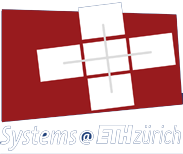Publications by Carlos%20Rosales-Fernandez
2016
Proceedings of the International Conference for High Performance Computing, Networking, Storage and Analysis, Salt Lake City, UT, USA, November 2016
The goal of the extreme scale plasma turbulence studies described in this paper is to expedite the delivery of reliable predictions on confinement physics in large magnetic fusion systems by using world-class supercomputers to carry out simulations with unprecedented resolution and temporal duration. This has involved architecture-dependent optimizations of performance scaling and addressing code portability and energy issues, with the metrics for multi-platform comparisons being "time-to-solution" and "energy-to-solution". Realistic results addressing how confinement losses caused by plasma turbulence scale from present-day devices to the much larger $25 billion international ITER fusion facility have been enabled by innovative advances in the GTC-P code including (i) implementation of one-sided communication from MPI 3.0 standard; (ii) creative optimization techniques on Xeon Phi processors; and (iii) development of a novel performance model for the key kernels of the PIC code. Results show that modeling data movement is sufficient to predict performance on modern supercomputer platforms.
@inproceedings{abc,
abstract = {The goal of the extreme scale plasma turbulence studies described in this paper is to expedite the delivery of reliable predictions on confinement physics in large magnetic fusion systems by using world-class supercomputers to carry out simulations with unprecedented resolution and temporal duration. This has involved architecture-dependent optimizations of performance scaling and addressing code portability and energy issues, with the metrics for multi-platform comparisons being "time-to-solution" and "energy-to-solution". Realistic results addressing how confinement losses caused by plasma turbulence scale from present-day devices to the much larger $25 billion international ITER fusion facility have been enabled by innovative advances in the GTC-P code including (i) implementation of one-sided communication from MPI 3.0 standard; (ii) creative optimization techniques on Xeon Phi processors; and (iii) development of a novel performance model for the key kernels of the PIC code. Results show that modeling data movement is sufficient to predict performance on modern supercomputer platforms.},
author = {William Tang and Stephane Ethier and Grzegorz Kwasniewski and Torsten Hoefler and Khaled Z. Ibrahim and Kamesh Madduri and Samuel Williams and Leonid Oliker and Carlos Rosales-Fernandez and Tim Williams},
booktitle = {Proceedings of the International Conference for High Performance Computing, Networking, Storage and Analysis},
title = {Extreme Scale Plasma Turbulence Simulations on Top Supercomputers Worldwide},
venue = {Salt Lake City, UT, USA},
year = {2016}
}

